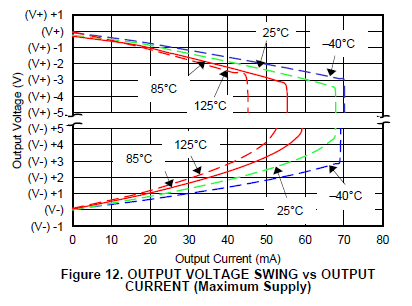Hello, all
Now we have one inquiry regarding voltage output swing (Vo) on OPA192 from our customer.
Please refer to the item below, and feedback us with your comment.
When referring page 3 of this datasheet, the positive rail of Vo is defined in case RLOAD=10kohm and RLOAD=2kohm individually.
However, they would like to know the case when RLOAD is more than 100kohm.
Please let us clarify how Vo value would be on this case.
We thank you in advance for your information.
Best regards,




